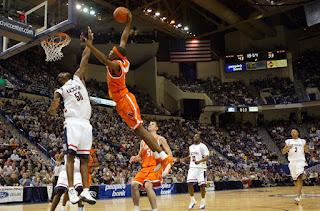The 2020-2021 Syracuse Orange basketball team will feature five players with family connections to the basketball program.
The most casual fans are aware that starting shooting guard Buddy Boeheim is the son of Syracuse head coach Jim Boeheim. Jim scored 745 points in his Syracuse career. Buddy will surpass him fairly early this season as he is currently at 708 points.
Walk-on forward Nick Giancola is Jim Boeheim's nephew, the son of his wife Juli's sister, and Buddy's cousin. Nick played in five games last season, but has yet to score for the Orange.
Walk-on guard Shane Feldman is the younger brother of current graduate assistant and former walk-on guard Ky Feldman. Ky scored 10 points in his Syracuse career; Shane has yet to play.
Walk-on forward Chaz Owens is the son of all-time Syracuse great Billy Owens. Billy Owens was the Big East Player of the Year his junior year, and had a solid NBA career. Billy scored 1,840 points in his three years at Syracuse, while Chaz has yet to play.
Finally, walk-on guard Chris Lavalle is the son of Kelly LaValle-Seubert, who was the long time administrative assistant to head coach Jim Boeheim. Kelly passed away due to cancer in 2017, and the school named the players' lounge after her. Lavalle played in five games last year, but failed to score in any.







